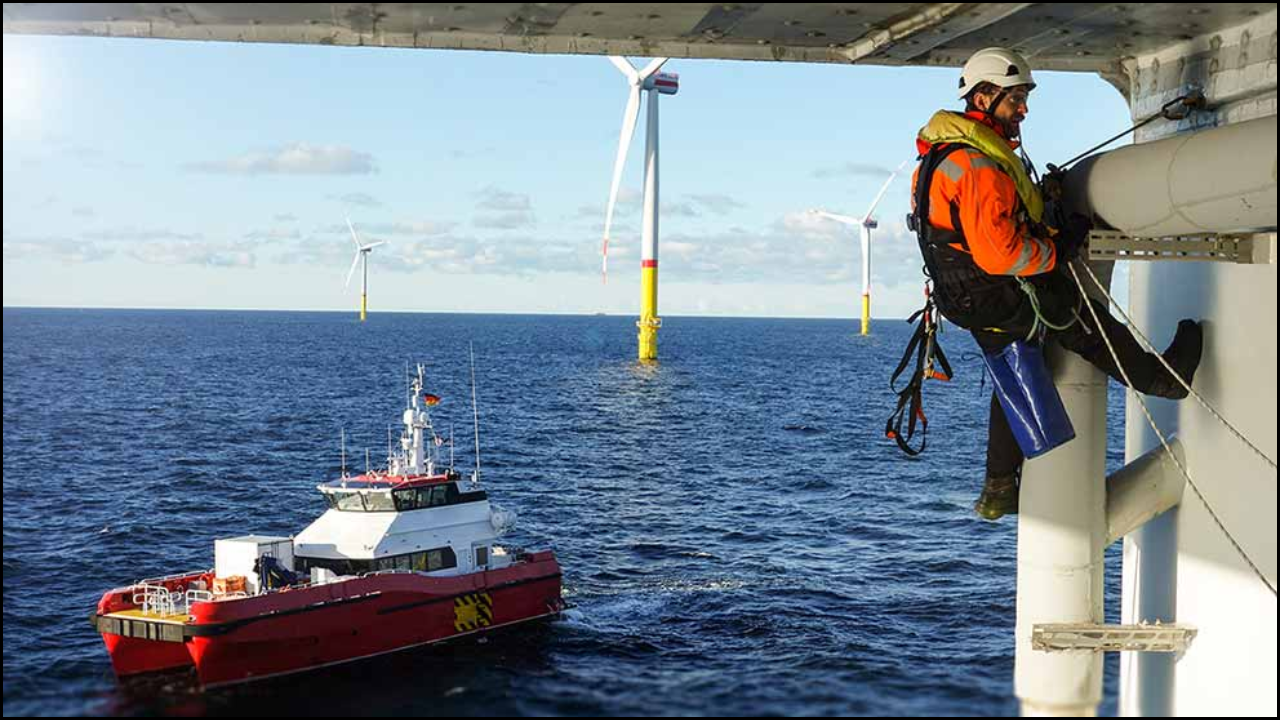
Offshore renewable energy has become one of the most promising solutions to meet global clean energy goals. The harsh marine environment, however, presents major challenges in maintaining offshore installations. Robotics plays a crucial role in addressing these challenges by offering advanced, precise, and safe solutions for maintenance and inspection. The introduction of autonomous underwater vehicles, aerial drones, and robotic arms has transformed how offshore facilities operate and maintain performance. The integration of artificial intelligence (AI), machine learning, and automation further enhances reliability, reduces downtime, and ensures long-term efficiency in offshore renewable systems.
Table of Contents
Importance of Robotics in Offshore Maintenance
Offshore renewable energy sites such as wind farms, tidal generators, and wave energy systems require regular inspection and repair. Human intervention in such areas is risky and costly. Robotics minimizes these risks and improves efficiency.
- Robotics increases safety by reducing the need for human divers or engineers in hazardous zones.
- Maintenance robots operate continuously without fatigue, ensuring consistent monitoring.
- Cost reductions occur due to fewer offshore trips and improved predictive maintenance.
- AI-integrated robots help detect early signs of corrosion, wear, and equipment failure.
Types of Robots Used in Offshore Renewable Energy
Different types of robots perform specialized roles depending on the renewable energy system and maintenance needs.
| Type of Robot | Primary Function | Application Area | Advantages |
|---|---|---|---|
| ROVs (Remotely Operated Vehicles) | Underwater inspection and repair | Tidal and wave systems | High precision, remote control capability |
| AUVs (Autonomous Underwater Vehicles) | Autonomous exploration and data collection | Subsea cables and foundations | Real-time monitoring, AI-based path planning |
| Drones (Aerial Robots) | Visual inspection of turbines and blades | Offshore wind farms | Quick data capture, reduced human risk |
| Crawler Robots | Surface maintenance of structures | Wind turbine towers | Access to confined areas, reduced downtime |
| Robotic Arms | Repair and component replacement | All offshore platforms | Precise manipulation, heavy-lift capability |
Applications of Robotics in Offshore Wind Energy
Offshore wind turbines require constant maintenance to sustain power output. Robotics simplifies these operations through automation and precision tools.
- Drones inspect turbine blades for cracks and erosion using high-resolution cameras.
- Robotic crawlers climb turbine towers to clean and conduct surface maintenance.
- Subsea ROVs inspect foundations and cables to identify corrosion or fatigue.
- Robotic arms perform bolt tightening, sensor replacement, and blade repairs.
Applications of Robotics in Tidal and Wave Energy Systems
Tidal and wave energy systems operate underwater, where maintenance poses unique challenges. Robotics helps overcome these difficulties.
- AUVs map the seabed and monitor tidal turbine positioning.
- ROVs perform visual and sonar inspections of submerged machinery.
- Robotic grippers handle component retrieval and replacement without human divers.
- Data-gathering robots track marine growth that may impact system performance.
Technological Innovations in Robotic Maintenance
Recent innovations have advanced the field of offshore maintenance robotics. These technologies focus on autonomy, AI, and sustainability.
| Innovation | Description | Impact on Maintenance |
|---|---|---|
| AI-driven Fault Detection | Uses machine learning algorithms to identify issues | Early maintenance reduces breakdowns |
| Digital Twin Technology | Creates virtual models for performance simulation | Improves predictive analysis and decision-making |
| Self-charging Robots | Utilizes renewable sources like wave energy to recharge | Enables continuous operation offshore |
| Swarm Robotics | Deploys multiple robots for collaborative tasks | Increases efficiency in large-scale inspections |
| Advanced Sensors and Imaging | Includes LiDAR and 3D imaging technologies | Enhances data accuracy and structural assessment |
Benefits of Using Robotics in Offshore Renewable Energy
Robotics delivers measurable advantages for efficiency, sustainability, and safety.
- Enhanced Safety – Robotics eliminates direct human exposure to deep-sea and high-altitude risks.
- Operational Efficiency – Automated systems perform maintenance faster and with higher accuracy.
- Cost Reduction – Fewer maintenance trips and reduced downtime lower operational expenses.
- Environmental Protection – Robots minimize disturbance to marine ecosystems during repairs.
- Data-Driven Insights – Continuous monitoring provides valuable analytics for optimization.
Challenges and Limitations of Robotic Maintenance
Despite the progress, certain limitations still affect the full deployment of robotics offshore.
| Challenge | Explanation | Potential Solution |
|---|---|---|
| High Initial Costs | Developing and deploying robots is expensive | Increased production scale and shared platforms |
| Communication Barriers | Remote data transmission underwater is difficult | Use of advanced acoustic and optical modems |
| Battery Limitations | Limited energy supply reduces mission duration | Integration of renewable charging systems |
| Environmental Resistance | Harsh conditions can damage sensors and joints | Use of corrosion-resistant materials |
| Complex Coordination | Multiple robot operations need synchronization | AI-based mission control and swarm management |
Role of Artificial Intelligence and Machine Learning
AI and machine learning amplify the capabilities of offshore maintenance robots. These technologies allow real-time decision-making, predictive maintenance, and self-learning behaviors.
- Predictive models forecast when components will fail, enabling timely action.
- Image recognition assists in defect identification from drone or ROV footage.
- AI algorithms plan optimal routes for underwater exploration.
- Machine learning improves robot adaptability to changing weather and ocean conditions.
Future Prospects of Robotic Offshore Maintenance
Future developments indicate increased autonomy, collaboration, and integration with other renewable systems. Robotics will likely evolve from reactive to proactive maintenance tools.
- Swarm robotics will perform synchronized inspection and repair missions.
- Integration with IoT will create interconnected maintenance networks.
- Renewable-powered charging hubs will sustain long-term robotic operations.
- Collaboration between research institutes and energy firms will enhance innovation.
Comparison of Human and Robotic Maintenance Approaches
| Aspect | Human-Based Maintenance | Robotic Maintenance |
|---|---|---|
| Safety | High risk in extreme conditions | Minimal risk due to remote operation |
| Speed | Slower due to human limitations | Faster through automation |
| Cost | High due to travel and labor | Lower after initial investment |
| Precision | Dependent on human skill | Consistent accuracy through sensors |
| Environmental Impact | May disturb marine life | Low disturbance with automated control |
Moving Forward
Robotics represents a transformative advancement in offshore renewable energy maintenance. The combination of drones, underwater vehicles, and robotic manipulators ensures operational efficiency while reducing human risks. Artificial intelligence and automation enhance system reliability and longevity. Continuous innovation will lead to smarter, more sustainable maintenance processes, enabling offshore renewable energy to become a more resilient pillar of global clean energy development. The growing collaboration between technology developers and energy providers will ensure that robotics remains at the forefront of offshore energy sustainability.





